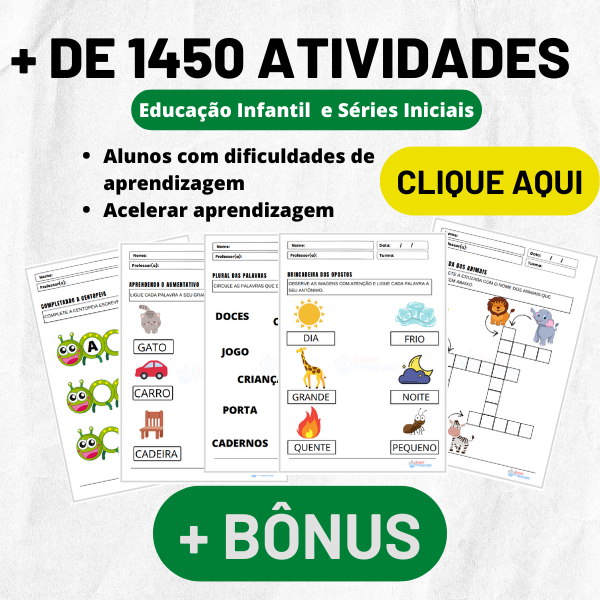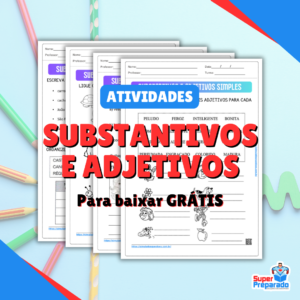Para Baixar em PDF:
Simulado 1 Concurso Professor De Inglês
1.De acordo com STAINBACK e STAINBACK, em relação
aos fundamentos do ensino inclusivo, analisar os itens
abaixo:
I – Os alunos aprendem a ser sensíveis, a compreender e a
respeitar, através das interações e das comunicações
facilitadas.
II – Nas salas de aula integradas, todas as crianças
enriquecem-se por terem a oportunidade de aprender
umas com as outras.
III – Alunos com níveis diferentes de deficiência aprendem
menos em ambientes integrados.
Estão CORRETOS:
a) Somente os itens I e II.
b) Somente os itens I e III.
c) Somente os itens II e III.
d) Todos os itens.
2. Segundo os Parâmetros Curriculares Nacionais – Língua
Estrangeira, em linhas gerais, o que a aprendizagem de uma
Língua Estrangeira faz é:
a) Regredir no conhecimento, na leitura e na produção de um
texto escrito.
b) Possibilitar que o aluno diminua os processos de construir
significados nessa língua e que se constitua em um ser
discursivo no uso de uma língua estrangeira.
c) Aumentar o conhecimento sobre linguagem que o aluno
construiu sobre sua língua materna, por meio de
comparações com a língua estrangeira em vários níveis.
d) Abster-se do ato de pensar, falar, ler e escrever sobre sua
própria língua.
3.The Bill of Rights
At the end of the Constitutional Convention, many of the
framers thought that there was one big problem with the
Constitution: It didn’t list the peoples’ rights. This started an
argument among the framers. Some thought a bill of rights
was absolutely needed. Others were tired and wanted to go
home. They were worried that if they had to write a bill of
rights, it might stop the whole convention. Then the
Constitution wouldn’t be finished. Still others thought that such
a bill just wasn’t needed.
More debate took place until the framers finally made a
choice. No bill of rights was written. But when the Constitution
was sent to each state to be voted on and accepted, many
states insisted that a list of rights should be added. So before
all the states voted on the Constitution, the Bill of Rights was
added on. There were 10 amendments to the Constitution.
The 10 were ratified at the same time. They came to be known
as the Bill of Rights. Only nine of them are actually rights.
Since then, there have been other amendments to the
Constitution, but only the first 10 are part of what’s known as
the Bill of Rights.
Since the Constitution was written, more than 10,000
amendments have been suggested. But only 27 amendments
have passed. Women were given the right to vote in the
19th Amendment in 1920. Slavery was outlawed in the
13th Amendment in 1865. The 26th Amendment in 1971
lowered the voting age to 18.
Choose the CORRECT alternative, according to the text:
a) At the end of the convention, a list of the people´s rights
was sent to all states to be voted.
b) There were 26 amendments to the constitution.
c) The last amendment to pass was the right to vote for
women.
d) Before all the states voted on the Constitution, the Bill of
Rights was added on.
4.According to the text, analyze the items below:
I – At the end of the Constitutional Convention, many of the
writers of the new law thought that there was one big
problem with the Constitution: It didn’t list the peoples’
rights.
II – The 10 changes were approved and given formal sanction
at the same time.
a) Items I and II are correct.
b) Only item I is correct.
c) Only item II is correct.
d) Items I and II are incorrect.
5.Regarding the use of referents underlined on the text,
analyze the items below:
I – In “It didn’t list…” “It” refers to “Constitution”.
II – “They” in “They were worried….” refers to “framers”.
III – “They” in “They came to be known as…” refers to “states”.
It is(are) CORRECT:
a) Only item I.
b) Only items I and II.
c) Only items II and III.
d) None of the items.
6.Analyze the items below:
I – “Produce” is the adjective of the noun “production”.
II – “Industrial” is the adjective of the noun “industry”.
a) Items I and II are correct.
b) Only item I is correct.
c) Only item II is correct.
d) Items I and II are incorrect.
7.Regarding the correct use of verb tenses, analyze the
sentence below:
Look! Somebody climbs that tree over there (1st part). Can
you hear those people? What are they talking about?
(2nd part).
The sentence is:
a) Totally correct.
b) Correct only in its 1st part.
c) Correct only in its 2nd part.
d) Totally incorrect.
8. Read the sentences below, check C on the Correct ones,
W on the Wrong ones and, then, choose the CORRECT
alternative:
(—) There won’t be a lesson tomorrow.
(—) Is there any eggs in the fridge?
(—) It is a new supermarket in the neighborhood.
a) C – W – C.
b) W – C – C.
c) C – C – C.
d) C – W – W.
9.There is more than one way to talk about the future.
Check the only alternative that gives an INCORRECT way to
do so:
a) I’m seeing my parents this evening.
b) I really going to stop eating so much.
c) She’ll be at school the whole morning.
d) Her plane arrives Monday at 4 p.m.
10. Analyze the items below:
I – How is written your name?
II – I was given your name by a friend of mine.
a) Items I and II are correct.
b) Only item I is correct.
c) Only item II is correct.
d) Items I and II are incorrect.
gabarito
1-a
2-c
3-d
4-a
5-b
6-c
7-c
8-d
9-b
10-c
MAIS DE 300 ATIVIDADES DE MATEMÁTICA – PARA BAIXAR
MAIS DE 1450 ATIVIDADES PARA BAIXAR
MAIS DE 5 MIL QUESTÕES DE CONHECIMENTOS PEDAGÓGICOS
APRENDA INGLÊS HOJE! INSCRIÇÕES!
Cursos Online Gratuitos (COM CERTIFICADO)
Materiais PARA CONCURSOS E SELEÇÕES






